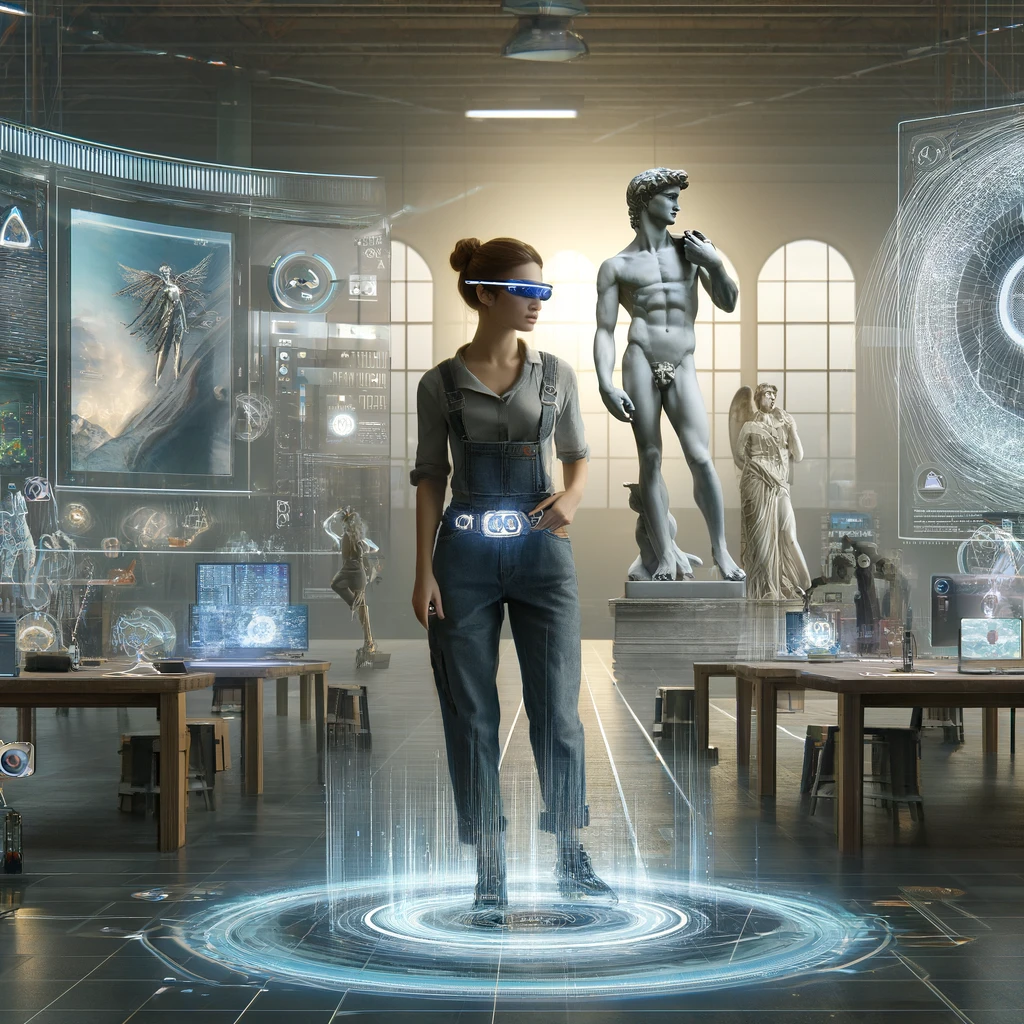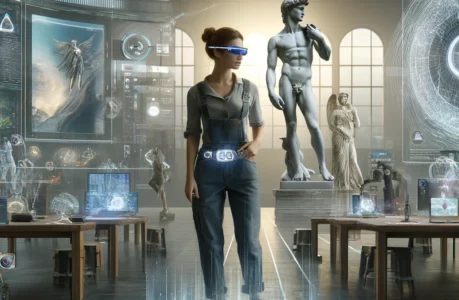Generative AI stands as a beacon of innovation in the field of artificial intelligence. It refers to the subset of AI technologies capable of creating new content – be it text, images, music, or even computer code. At the heart of Generative AI are Large Language Models (LLMs) like GPT (Generative Pretrained Transformer), which are trained on vast datasets to understand and generate human-like text.
These models are not mere repositories of information but are dynamic engines of creation. They analyze the patterns, nuances, and complexities of language, enabling them to produce content that is often indistinguishable from that created by humans. The key to their prowess lies in their training process, involving the analysis of millions, if not billions, of data points, which teach them the subtleties of human communication.
Applications of Generative AI
The applications of Generative AI and LLMs are as diverse as they are revolutionary. In the realm of content creation, they empower writers, marketers, and educators by generating initial drafts, creative ideas, or even entire articles. But their utility extends far beyond the written word.
In the world of coding, they assist programmers by suggesting code snippets or debugging existing code, effectively acting as co-developers. Similarly, in graphic design, Generative AI aids in the creation of visual content, from initial sketches to finished pieces, streamlining the creative process.
Moreover, these technologies are making strides in the field of personalized education, offering tailored learning experiences that adapt to the individual learner’s pace and style. They simulate interactive conversations, providing explanations, answering questions, and even administering tests, all personalized to the learner’s needs.
Impact on Daily Life
The impact of Generative AI and LLMs on our daily lives is profound and pervasive. Consider the ease with which we can now generate a personalized email, craft a creative story, or even draft a business plan. These tasks, once demanding considerable time and effort, are now within reach at the click of a button.
But the influence of Generative AI extends beyond individual convenience. It is redefining industries, streamlining workflows, and opening up new avenues for innovation and creativity. Yet, as with any technology, it brings its challenges and ethical considerations, from concerns over misinformation to the potential displacement of jobs.
However, embracing Generative AI and LLMs with an informed perspective allows us to mitigate these challenges while harnessing their potential for positive change. By automating routine tasks, they free us to focus on the creative and strategic elements of our work, enhancing productivity and fostering innovation.
Conclusion
Generative AI and Large Language Models are not just technological advancements; they are harbingers of a new era in human creativity and interaction. As we stand on the cusp of this new dawn, it is imperative to approach these technologies with a balanced view, recognizing their potential to transform our lives for the better while remaining vigilant about their challenges.
By understanding Generative AI and LLMs, we can better navigate the digital future, leveraging these tools to enhance our work, enrich our lives, and open up a world of possibilities previously unimaginable. The journey into this brave new world of AI is only beginning, and the paths it will forge are as exciting as they are unpredictable.
References
McKinsey
The McKinsey article focuses on the impact of Generative AI on business and society. Generative AI is a branch of artificial intelligence that enables the creation of new and varied content, such as text, images, audio and video. The adoption of AI has increased significantly in recent years and is expected to have a significant impact on the global economy. Generative AI can improve efficiency and productivity, but it also poses risks in terms of accuracy, bias and malicious use.
NVIDIA
NVIDIA’s article provides an overview of Generative AI, including how it works and its applications. Generative AI uses neural networks to identify patterns in data and create new content. The ability to use different learning approaches, such as unsupervised or semi-supervised learning, has made it easier and faster to leverage large amounts of unlabeled data. Generative AI has applications in a variety of industries, including healthcare, life sciences and entertainment.
TechTarget
The TechTarget article explores Generative AI in depth, covering its benefits, limitations, use cases and ethical concerns. Generative AI can generate varied content, including text, images and audio. Although the technology is not new, recent advances, such as generative adversarial networks and transformers, have significantly enhanced its capabilities. Generative AI can have a significant impact on businesses, helping with tasks such as code writing, drug design and content creation. However, it also raises concerns about accuracy, bias and misinformation.

